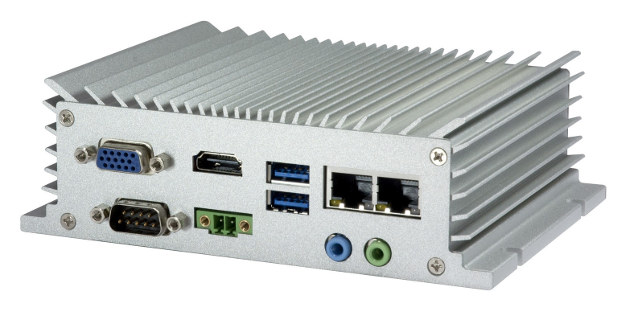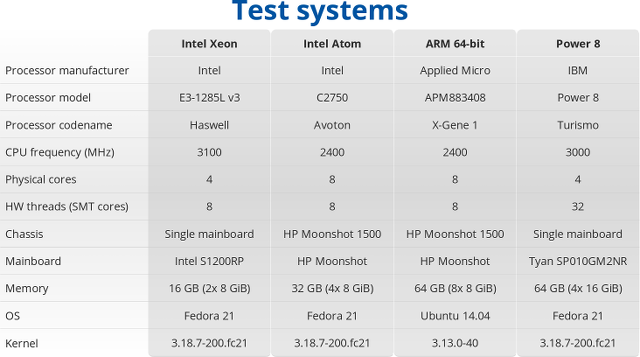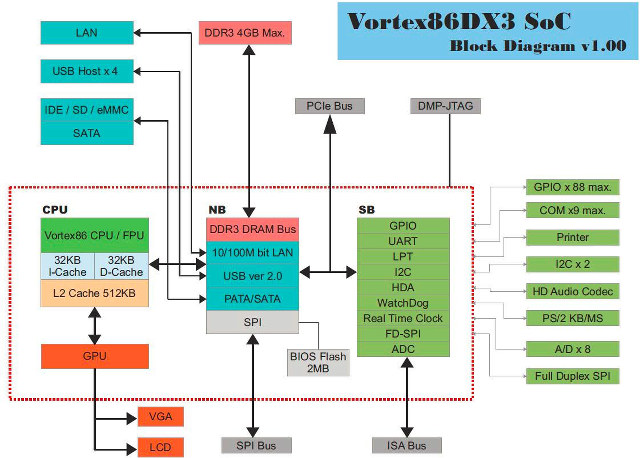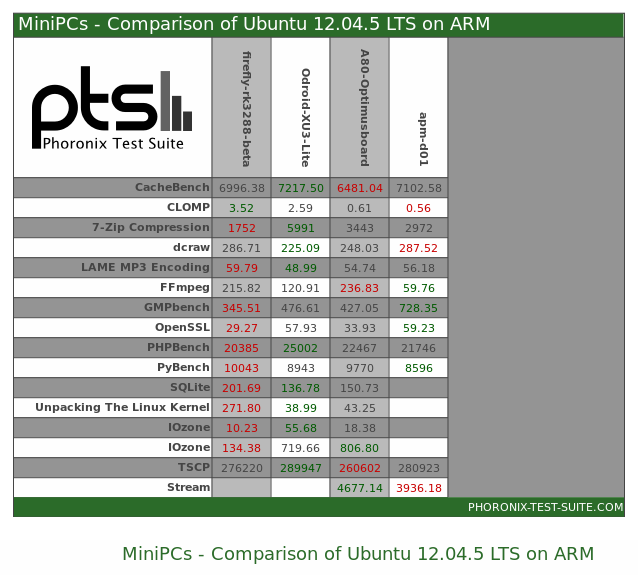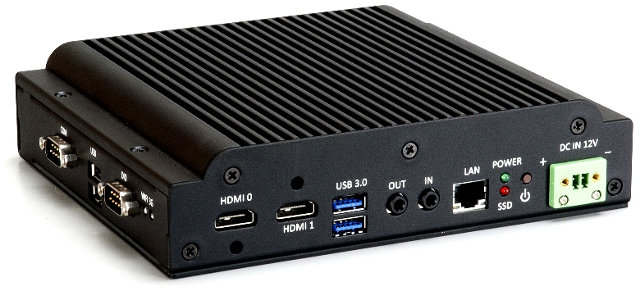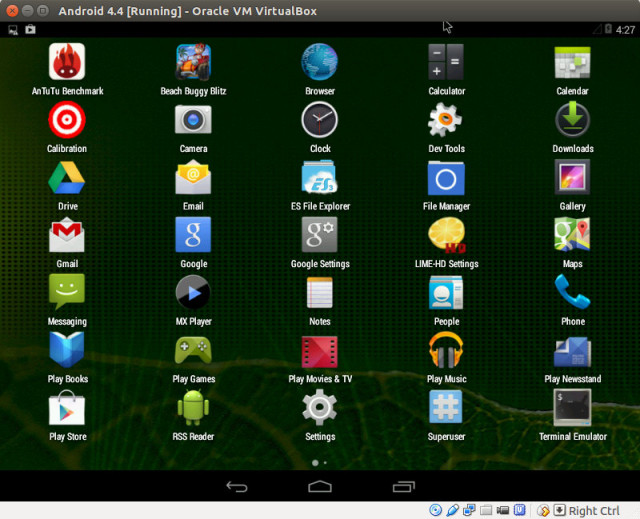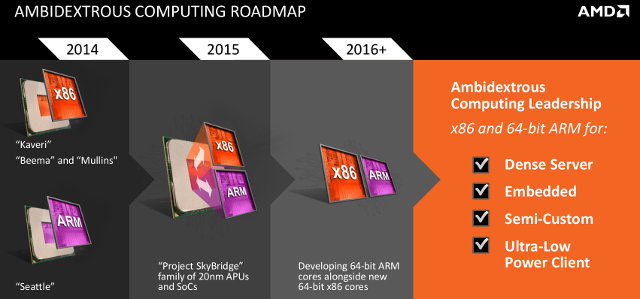VIA Embedded Store has just sent a newsletter to announce the launch of the company’s latest rugged embedded computer, AMOS-3005, powered by VIA Eden X4 processor and VX11 media processor and chipset, supporting temperature ranges from -10°C to 60°C, and featuring a flexible 9V-36V DC input. AMOS-3005 specifications: Processor – VIA Eden X4 quad core 64-bit x86 processor @ 1.2 GHz (NanoBGA2 package) with 2MB L2 cache, 1066 MHz front side bus Chipset – VIA VX11 Media System Processor with an integrated VIA Chrome 640/645 graphics processor supporting DirectX 11, and OpenCL, as well as a VIA ChromotionHD 5.0 video engine supporting dual 1080p HD decoding of H.264, MPEG-2, WMV9, and VC-1 codecs. System Memory – 1x DDR3 1333 SDRAM SODIMM socket (Up to 8GB memory size) Storage – 1x mSATA slot, 32Mbit Flash memory for AMI BIOS. Video Output- 1x HDMI, 1x VGA up to 2048×1536, with dual independent […]
HPC Performance & Power Usage Comparison – Intel Xeon E3 vs Intel Atom C2720 vs Applied Micro X-Gene 1 vs IBM Power 8
Last year, the CERN published a paper comparing Applied Micro X-Gene (64-bit ARM) vs Intel Xeon (64-bit x86) Performance and Power Usage, and they’ve now added IBM Power 8 and Intel Atom Avoton C2750 processor to the mix in a new presentation entitled “A look beyond x86: OpenPOWER & AArch64“. So four systems based on Intel Xeon E3-1285L, Intel Atom C2750, Applied Micro X-Gene 1, and IBM Power 8 were compared, all running Fedora 21, except the HP Moonshot 1500 ARM plarform running Ubuntu 14.04 and an older kernel. All four systems use gcc 4.9.2, and Racktivity intelligent PDUs were used for power measurement. I’ll just share some of their results, you can read the presentation, or go through the benchmark results to find out more. HEP-SPEC06 is a new High Energy Physics (HEP) benchmark for measuring CPU performance developed by the HEPiX Benchmarking Working Group, and here it’s not […]
Vortex86DX3 is a New x86 SoC for Embedded Systems
Intel is already making embedded version of their processor with example with Bay Trail-I or Quark SoCs, but Taiwan based DMP Electronics has also been making x86 SoC such as Vortex86EX that can be found in $39 86duino Zero board, which must be one the cheapest, if not the cheapest, x86 board on the market. Of course, this is not designed to run Windows and Office, but rather some embedded (IoT) applications. The company has recently launched Vortex86DX3, a more powerful x86 dual core processor, suited to embedded systems and communication products such as thin clients, NAT routers, gateways, etc… DMP Vortex86DX3 specifications: Dual Core x86 Processor @ 1GHz with 6 stage pipeline, x86 instruction set Floating point – Implements ANSI/IEEE standard 754-1985 for binary Floating-Point Architecture Cache – 8-way 32K I-Cache, 8-way 32K D-Cache, 4-way 512KB L2 Cache with write through or write back policy System DDR3 Control Interface – 32-bit data […]
Linux Benchmarks – Rockchip RK3288 vs Exynos 5422 vs AllWinner A80 vs Intel Atom Z3735F
With all these Intel Atom Z3735F been released right now at a price similar to ARM based mini PCs, many people, including myself, are wondering about the performance of the low cost Intel processor against their ARM competitors. Ian Morrison just published some results from Phoronix Test Suite comparing the performance of Firefly-RK3288 (Rockchip RK3288), ODROID-XU3 Lite (Samsung Exynos 5422 BIN2), and A80 OptimusBoard (Allwinner A80) in Linux (Ununtu 12.04.5), against the performance of MeegoPad T01 (Intel Atom Z3735F) running Linux from a Live CD on a USB drive. Some of the benchmarks failed because Phoronix Test Suite got apparently confused with the file systems located on a USB drive, but at least we’ve got a comparison point, and the results are a bit confusing, as they’re no clear winner. In some tests like FFmpeg, the Intel SoC really crushed the ARM competition being at least twice as fast as […]
VIA ARTiGO 1300 Quad Core x86 Rugged Digital Signage Player
VIA has recently announced ARTiGO 1300, a rugged digital signage player powered by a VIA quad core E-Series x86 processor with VX11PH media processor, provides two HDMI outputs for independent displays, USB 3.0 ports, Gigabit Ethernet and more. Beside digital signage applications, it can also be used for kiosks, menu boards, HMIs, and other IoT applications. ARTiGO A1300 Specifications: Processor – VIA QuadCore E-Series @ 1.0 GHz Chipset – VIA VX11PH Media System Processor with Chrome 645/640 GPU for 2D/3D, and hardware video decoding support (MPEG-2, WMV9, VC-1 and H.264) System Memory – 1x DDR3 1066/1333 SODIMM socket (up to 8GB) Storage – Support 1x 2.5” SATA SSD/HDD, 1x mSATA SSD. 32Mbit Flash memory for AMI Aptio UEFI BIOS. Video Output – 2x HDMI ports supporting resolutions up to 1920 x 1080 pixels. Dual independent HDMI display support. Audio – VIA VT2021 High Definition Audio Codec, Line-in and Line-out Connectivity […]
Android-x86 4.4 Stable Released for x86 Computers, Laptops, Netbooks…
There are several methods to run Android in an x86 computer or laptop, but Android-x86 could be one of the best to do that, and the developers have just released the first stable release for Android-x86 4.4 Kitkat. This release includes support for OpenGL ES hardware acceleration for AMD Radeon and Intel graphics, ffmpeg integration to support HD video playback in apps, and more. The file to download is android-x86-4.4-r1.iso, which you can then install on a USB flash drive:
|
1 |
sudo dd if=android-x86-4.4-r1.iso of=/dev/sdX |
where /dev/sdX is the device name of your usb drive. If you are a Windows users you can use Win32DiskImager utility instead. Android should then boot from USB, and you can decide to run it from USB or install it on you hard drive. I haven’t done this, but instead, I’ve created a new Linux 32-bit virtual machine in VirtualBox without internal storage to try it out quickly in […]
First Tizen 3.0 Common Milestone Released, Developer Program Announced
The Tizen Steering Group has announced the first release of Tizen 3.0 Common. Tizen Common is the common subset of development / build / test platform of the Tizen profiles, used by platform developers to develop the next version of the profiles, and a Tizen 3.0 common release is planned every quarter. This milestone release includes: 64-bit support for both Intel and ARM architectures Crosswalk-based web runtime Multiuser support Systemd Security: three-domain rule system for SMACK and Cynara as authorization framework Wayland display server Pre-built binary releases for can be downloaded @ http://download.tizen.org/releases/daily/tizen/common/common-wayland-x86_64/tizen_20140602.26/ for Intel Atom 3815 NUC Kit and NEXCOM VTC1010 in-vehicle computer based on Intel Atom 3825. However, Tizen 3.0 Common will also be tested on Intel NUC Haswell (core i5), Lenovo x230 IvyBridge (core i5) and on the ARM side, ODROID-U3 development board. If you want to build your own, refer to the developer guide, using tizen_common_2014.Q2 tag. More details can be found […]
AMD Announces ARM and x86 pin-to-pin Compatible APUs and SoCs for 2015, ARM K12 Core for 2016 and Beyond
AMD has designed x86 processor since its inception, and recently they’ve announced ARM Cortex A57 “Seatlle” SoCs targeting servers would be available later this year. They’ve now decided to merge their product line-up even further with Project Skybridge that aims to provide pin-to-pin compatible ARM and x86 SoCs and APUs by 2015, manufactured using a 20nm process. That means AMD’s customers should be able to leverage AMD’s “ambidextrous computing” solutions to design one and only board for x86 and ARM processors for server, embedded, semi-custom and ultra-low power applications. Processors of the “Project Skybridge” family will also be the first ARM based AMD processors to include a GPU (Graphics Core Next GPU), contrary to Seatlle SoCs, which are destined to be used for the server market, and do not come with a GPU. ARM processor will be based on low power ARM Cortex A57 cores and x86 processors will make […]


